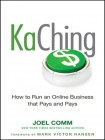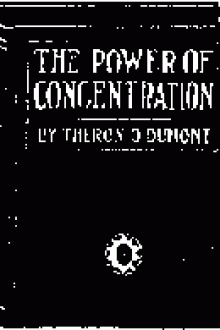KaChing: How to Run an Online Business that Pays and Pays Comm, Joel (books for 8th graders txt) 📖

Book online «KaChing: How to Run an Online Business that Pays and Pays Comm, Joel (books for 8th graders txt) 📖». Author Comm, Joel
Whether you’re looking to bring in help from guest writers or hoping to find a reliable ghostwriter to ease your workload, both are legitimate solutions. As long as the content is good—and it will need to be good enough to generate sufficient income to outweigh the cost—bringing in extra writers will help you to grow your online business and allow you take a backseat as it manages itself.
Creating content will always be the main work in an online business. It’s what produces the value in your site, and it’s what brings in the readers. But content alone doesn’t go KaChing. Advertising income does that.
Turning Your Content into KaChing
At one time, monetizing a blog was difficult. Publishers would swear that if they could bring in enough users, those users would be valuable to advertisers. But no one really knew how valuable they’d be or how the advertisers would pay. The result was that advertisers paid far too much money through systems that didn’t measure worth accurately ... and the system crashed.
It took a little while for things to get going again, but now we’re spoiled with choices. The methods that haven’t worked have faded away, leaving only the proven and the most effective channels still in place. In this section, I describe around a dozen of the highest-earning tools that you’ll want to put on your web site to generate regular KaChing sounds from your content.
GOOGLE ADSENSE
My initial reaction to using Google AdSense was similar to that of many top Internet marketers.
I thought it was a waste of time.
I’d signed up, pasted the ad code, checked my stats ... and found that I was barely making enough money to keep me in candy bars. I didn’t think it was worth handing over large chunks of space on my Web pages in return for little more than a buck a day.
That changed when I attended a small conference in 2004. There were only a couple dozen people there, but one of them pulled out his laptop and checked his AdSense stats right in front of me. I saw that he was making between $200 and $300 per day.
I didn’t just hear his KaChing, I also heard a ping as a light went on over my head. I put the code back on my site and started playing with implementation strategies.
I tried different ad sizes. I experimented with the color schemes. I moved ad units to different parts of the page. And I kept track of everything I was doing so that I could see which methods worked best. Within a few months I was making $500 a day, sometimes even $1,000.
I can’t tell you how good that KaChing felt!
Figure 3.4Two AdSense units on my site, WorldVillage.com. Look at how I’ve blended the ads into the page. The link unit on the left looks like part of the site’s navigation links; the ad unit in the article is impossible for readers to miss. Careful implementation is key to hearing the AdSense KaChing.
This was everything I’d been waiting for. Ever since I’d launched WorldVillage, I’d believed that the Internet was capable of generating large amounts of stable, reliable—and passive—income to people who were willing to put in the effort to build the sites and figure out how to do it. Here was the proof (Figure 3.4). At the bottom of the daily totals in my AdSense stats were four figures. And it’s continued. Month after month, Google has been sending me checks for more than $15,000 each. This isn’t some company that doesn’t understand the Web, has more money than sense, and won’t be around this time next year. This is Google. This is the company that revolutionized Internet search, the company founded by two of the smartest and most technically brilliant people on the planet. This is the company that has actually found a way to keep publishers, advertisers, and users all happy—and make its shareholders happy, too.
I’ve come across lots of different ways to make money on the Internet, but Google’s AdSense has been a reliable source of revenue for me since 2004.
It’s a method I can rely on, and best of all, once it’s set up and the ads are in place, I can just leave it to do its thing. The money comes in by itself.
When you’re building an Internet business, you’ll want to fill your site with lots of different cash registers. You’ll want to hear that KaChing ring out right around your online store. But you’ll also want to think of AdSense as your main cash register. It’s the one that can give you your biggest revenues, and it’s the one that will give you your most reliable revenues, too.
AdSense is open to just about anyone who wants to use it. The company won’t place ads for pornography, gambling, or violent or racist sites—or even sites that sell beer, fake watches, or student essays—but apart from those nasty things, Google will approve just about anyone. You can sign up by clicking the “Advertising Programs” link at the bottom of Google’s main page or by surfing directly to www.google.com/adsense. You’ll need to identify which domain you want to place the ads on, and within a day or two, you’ll receive your approval. You’ll then be able to use AdSense’s very simple ad creator program to format your ads, choosing the size, color, and other factors that dictate the appearance of the ads. When you’re finished, you’ll receive a few lines of code that you can paste onto your Web pages that will serve up ads drawn from Google’s massive AdWords inventory.
It all sounds very simple. And it is: cut, paste, KaChing.
But if you really want to make the big bucks with AdSense—and there are big bucks to be made with AdSense—you’ll want to do a little more than cut and paste. You’ll





Comments (0)